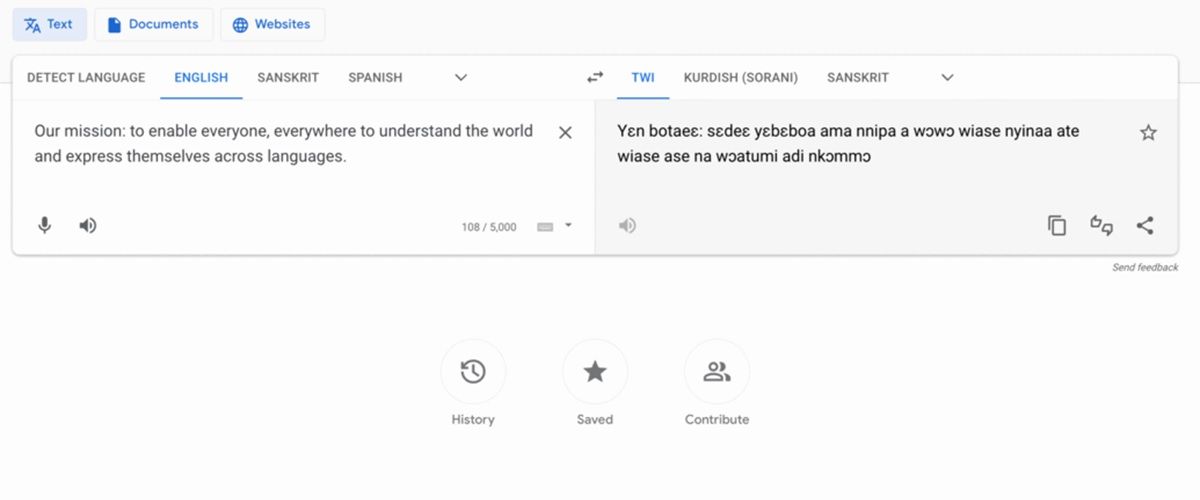
When it seemed that DeepL was beginning to be a tough competition for Google’s translator, the big G has come to tidy up. During their Google I/O 2022 event, those from Mountain View have confirmed support for 24 new languages and dialects in their online translation service.
From now on, you can use Google Translate to translate a number of new languages into your local language. These new additions will be of great help, especially in countries like Bolivia, Chile, India, Kenya, Ethiopia, Sierra Leone , among others. Next, we present the 24 languages that have just arrived in Google Translate.
The 24 new languages that are now available in Google Translate

This Google Translate update will primarily benefit indigenous communities . Specifically, Google expects 300 million people to use its app to translate these 24 new languages:
- Assamese : worn by about 25 million people in North East India
- Aymara : used by about 2 million people in Bolivia, Chile and Peru
- Bambara : worn by about 14 million people in Mali
- Bhojpuri – Worn by about 50 million people in North India, Nepal, and Fiji
- Dhivehi : worn by about 300 thousand people in Maldives
- Dogri – worn by about 3 million people in North India
- Ewe – Worn by about 7 million people in Ghana and Togo
- Guarani : used by about 7 million people in Paraguay, Bolivia, Argentina and Brazil
- Ilocano – worn by about 10 million people in the northern Philippines
- Konkani – worn by about 2 million people in central India
- Krio – used by about 4 million people in Sierra Leone
- Kurdish (Sorani) – used by about 8 million people, mostly in Iraq
- Lingala – worn by about 45 million people in the Democratic Republic of the Congo, the Republic of the Congo, the Central African Republic, Angola, and the Republic of South Sudan
- Luganda – used by about 20 million people in Uganda and Rwanda
- Maithili – worn by about 34 million people in North India
- Meiteilon (Manipuri) – used by about 2 million people in Northeast India
- Mizo : Worn by about 830 thousand people in North East India
- Oromo – worn by about 37 million people in Ethiopia and Kenya
- Quechua : used by about 10 million people in Peru, Bolivia, Ecuador and nearby countries
- Sanskrit : used by about 20 thousand people in India
- Sorani Kurdish – worn by about 14 million people in South Africa
- Tigrinya – worn by about 8 million people in Eritrea and Ethiopia
- Tsonga – worn by about 7 million people in Eswatini, Mozambique, South Africa and Zimbabwe
- Twi – worn by about 11 million people in Ghana
Google noted that these 24 new languages are the first to be added to the translator using Zero-Shot Machine Translation technology. This machine learning model is capable of translating one language into another without the need to access or view the other language. For more details, visit the official Google AI blog .
However, it is not a perfect solution, and Google will continue to refine and improve the accuracy of contextual translation , as in the case of German and Spanish. Also, the option to help improve Google Translate is still available to everyone.
